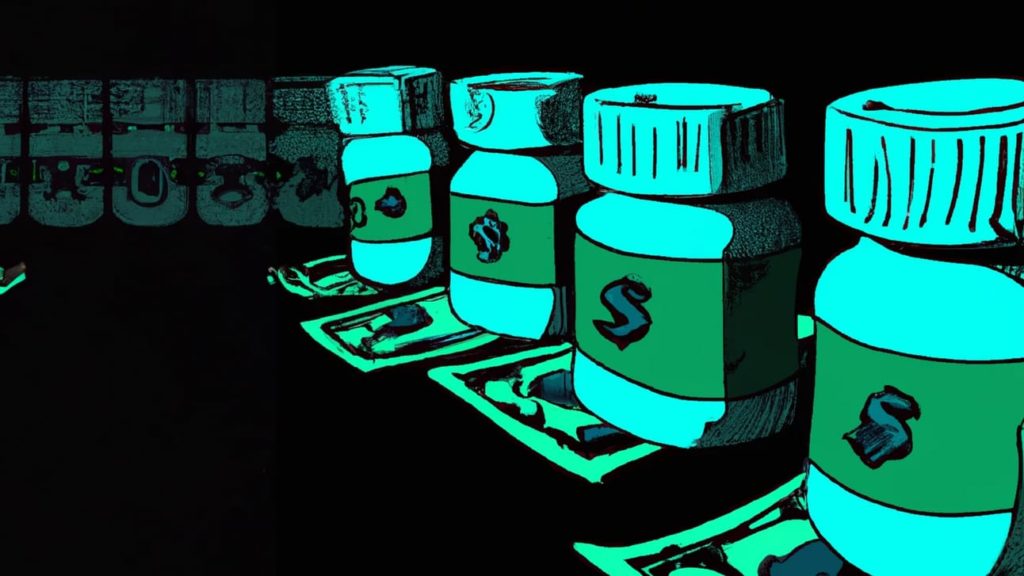So there won’t be news this week on the government’s opening offer** around price controls for the first 10 medicines selected under the Inflation Reduction Act.
Companies will get the government’s number on Thursday, and though they’re free to talk about it, I’m betting that they won’t.
That’s not going to keep people from speculating, and, indeed, Reuters is out with a piece giving a wrapup of where analysts think the prices will fall.
It’s not a very useful article. It considers all 10 medicines as a monolith, subject to the same blanket discount. And it doesn’t talk about the role of net prices in all of this. (The story’s thesis appears to be built around investors who don’t have confident guesses, but are erring on the side of caution.)
Let me nibble around the edge of the “prediction” topic. I’m not so bold as to think I have any idea where the government will go. But there are probably some hints that will offer more guidance than yesterday’s coverage did.
FIRST, the level of cuts is going to be wildly variable. There are some medicines that will probably see their list prices cut by only 25% or so — the smallest amount allowed by law — and others that might see their list prices cut by 90%. Talking as if all 10 drugs are going to see similar price actions is not going to be illuminating.
SECOND, those with the largest list price cuts are probably not going to see a huge haircut over what the net prices are. The IRA says that for drugs with net prices that are lower than the statutory minimum, the lowest net price becomes the ceiling price.
There is one insulin on the list — NovoLog/Fiasp — and it’s generally assumed that the existing list-to-net discount on insulins is more than 70% (this Milliman report puts it at 84%, on average). So if that drug takes a giant list-price cut, it’s entirely possible that it won’t be all that meaningful. The other diabetes meds and anticoagulants on the list are also highly rebated.
That doesn’t mean that the government can’t inflict painful cuts. It’s just that you won’t be able to tell how painful without knowing more about net prices.
In contrast, a less-rebated medicine — Imbruvica is probably the best example of the 10 drugs in CMS’ crosshairs, with a rebate of maybe 12% — could get the “minimum” price cut and still be far more affected in the marketplace.
THIRD, in theory, CMS is going to put special weight on therapeutic comparators, which will further drive disparities in how the medicines are treated. Some drugs (think Eliquis) are considered gold standards, while others (Imbruvica) have a less compelling case over competitors. How CMS weighs all of this is still a black box, but it feels fair to assume that different medicines will be held to different standards.
All of this means that any blanket statements should be viewed with a huge amount of skepticism, especially if there’s not a discussion of net prices.
** To be clear: it feels weird talking about the government’s “offer” or “bid” or whatever because the companies have zero leverage to move that number, which isn’t based on any objective standard.
The other big event this week is the arguments tomorrow in AstraZeneca’s IRA case. I don’t see dial-in details on the docket, so I can’t promise that I’ll listen in. (I also expect it to be a recapitulation of the well-trod arguments already outlined in the briefs from each side.) Bloomberg Law has a pretty good overview of the case, but the only important question is whether the judge tips his hand.
This required-reading BMC Medicine piece is a fantastic overview of how to think about the future of cost-effectiveness analyses, which are likely to show that medicines are a much better deal than is now recognized: “It is reasonable for society to want to be sure that it is getting value for its money. Just by (a) recognizing that most medicines will go generic, (b) can help not only the patient but also caregivers, (c) can restore productivity, and (d) offer system-wide scientific spillovers, we can appreciate that medicines can be worth more than traditional CEA would have us believe.”
This piece by Reuters can be read side-by-side with this one by Bloomberg. Both look at the price of Ozempic outside the United States (the Bloomberg one focuses on Mexico). I’m extra-sensitive to this topic because it will, in theory, be the focus on the Senate hearing next week. The upshot is that there are other countries where the price of obesity meds is not dissimilar from the U.S. list price (Switzerland and the UAE) and plenty of places where the price is between $250 and $350 a month, give or take. That’s a lot lower than the U.S list price, but those numbers are not wildly different from the net price in the United States. An insured patient without Zepbound coverage can get a coupon that takes the net price below $500 a month, and it’s likely that rebated prices are even lower.
Important corrective from Axios: the prior auth reforms that the Biden administration is putting forward don’t include drugs.
If this email was forwarded to you, and you’d like to become a reader, click here to see back issues of Cost Curve and subscribe to the newsletter.





